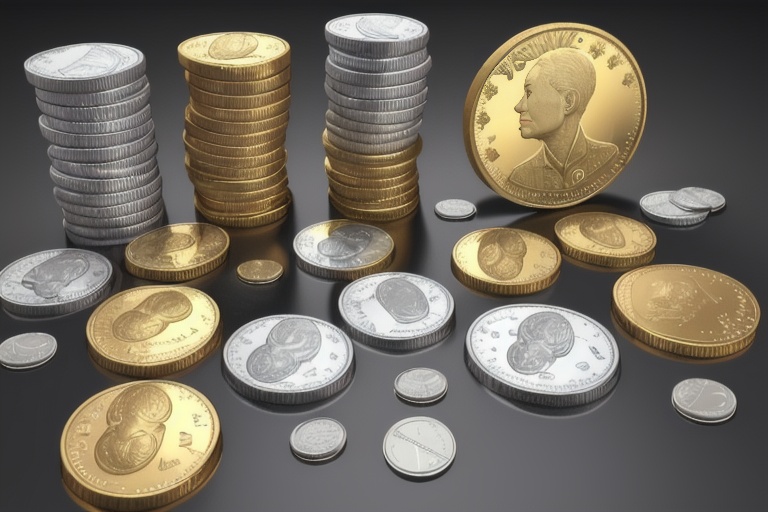Coin collecting, often known as numismatics, remains an absorbing pastime that entices a diverse group of individuals. It's a multifaceted discipline that extends beyond the mere accumulation of currency—numismatists pore over coins, their production, their history, and their broader cultural significance. They unravel the mysteries of coinage, from antiquity to the present, enriching our understanding of civilization's economic underpinnings.
Coin collecting, often known as numismatics, remains an absorbing pastime that entices a diverse group of individuals. It's a multifaceted discipline that extends beyond the mere accumulation of currency—numismatists pore over coins, their production, their history, and their broader cultural significance. They unravel the mysteries of coinage, from antiquity to the present, enriching our understanding of civilization's economic underpinnings.
The Historical Foundation of Numismatics
The reawakening of interest in classical civilizations during the European Renaissance marked the genesis of modern numismatics. It is there that coin collecting transformed from a casual activity into a structured pursuit driven by a desire to reconnect with bygone eras. The term "numismatics," as it entered English parlance in the 19th century, encapsulates the confluence of collecting coinage and studying its historical import.
Numismatic Intrigues
At the heart of numismatics lies the fascination with coins that possess unusual traits or are exceedingly scarce. Pieces that were struck with errors or bear hallmarks of historical events carry a certain allure, often fetching prices that soar well above their intrinsic or face value. Take, for instance, some U.S. Silver quarters from the 20th century, which, despite a nominal value of 25 cents, can command prices in the tens of thousands of dollars.
An Economic Principle at Play
The existence of highly valued collectible coins echoes the economic principle of Gresham's Law—money of less perceived value circulates more frequently than more valuable coins. Numismatic coins, removed from general currency circulation, are instead retained as treasured assets, owing to their rarity and historical gravity.
The Edification of a Numismatist
A numismatist's journey involves both fervor for coinage and dedication to learning. Within the U.S., numismatic education is rigorous, often culminating in examinations that challenge a candidate's grasp of the discipline’s breadth. It is through these courses that numismatists equip themselves with the knowledge mandatory to navigate complex assessments of coin value and historical analyses.
The Enigmatic Allure of Coin Collecting
Coin collecting peers into history, presenting countless stories encapsulated in tiny metal discs. It is a hobby that serves as a steward of cultural heritage, a role cherished by investors, historians, and enthusiasts alike. Numismatics, then, is more than just an engaging diversion—it is, in essence, a treasure hunt through the annals of time.
A Numismatic Spectrum
Within numismatics itself lies an expanse of specialized fields. From notaphily, the study of paper money, to exonumia, which encompasses coin-like items such as tokens, and to scripophily—the collection of historical bonds and stocks—each category offers its own unique intricacies and delights.
Trivia and Noteworthy Aspects of Numismatics
Diving deeper into numismatics, one uncovers compelling tidbits: the city of Florence making its mark as the inaugural issuer of gold coins or the U.S. Secret Service's original mandate to suppress the proliferation of counterfeit currency—a stark reminder of the enduring link between numismatics and financial security.
The acquisition of rare coins, often a subject of curiosity, is facilitated by prestigious auction houses and trusted coin dealers who ensure the provenance and authenticity of such valuable items. Furthermore, the concept of numismatic gold coins—holding premium value beyond their base metal content—exemplifies the fusion of collectibility and investment potential.
Market Trends and Their Implications for Coin Collectors
Contemporary trends in coin collecting and valuation underscore the importance of remaining attuned to market dynamics. The burgeoning pursuit of scripophily, the integration of historical finance artifacts into collections, and the foray into alternative investments with rare coins at the forefront—these evolving landscapes underpin the adaptive nature of coin collecting.
Similarly, the global financial currents influence the gravitational pull towards precious metals like gold, which retain their charm as a hedge against volatility. Moreover, the intersections with other fields such as biotechnology showcase numismatics' versatility, celebrating milestones in coins and fostering a diverse collecting environment.
Financial Fluency in Numismatics
Grasping the principles of finance—whether public, corporate, or personal—can significantly bolster a numismatist's capability to appraise their collection's worth and decipher market value. An informed collector is a savvy investor, keeping abreast of financial news to anticipate and respond to shifts impacting the numismatic market.
Conclusion and Reflection
In summary, numismatics presents a world where hobby meets study, history informs value, and collectors engage with the past through the tokens of commerce that have shaped civilizations. It's a domain where the curious, the scholarly, and the investor converge, united by a shared reverence for the miniature monuments to human economic ingenuity—coins. Whether one is drawn to the rarefied or the reflective aspects of numismatics, or simply savors the thrill of the chase, it is an avocation that enriches with not just knowledge but with a sense of connection to the historical pathways etched out by currency through the ages.
Information for this article was gathered from the following source.




